Embora a classificação indique a qualidade de um livro de acordo com nossos dois critérios principais, ela não diz muito sobre suas características definidoras específicas. Portanto, utilizamos um conjunto de 20 qualidades para caracterizar cada livro de acordo com os seus pontos fortes:
Aplicável – Você vai receber conselhos que podem ser aplicados diretamente no local de trabalho ou em situações cotidianas.
Analítico – Você vai entender o funcionamento interno do assunto.
Conhecimento Contextualizado – Você vai obter conhecimentos contextuais como um modelo para ação ou análise consciente.
Controverso – Você vai ser confrontado com opiniões capazes de gerar debates fervorosos.
Audaz – Você vai encontrar argumentos que podem romper com perspectivas predominantes.
Abrangente – No resumo vão ser abordados todos os aspectos do assunto.
Exemplos Práticos – Você vai receber conselhos práticos ilustrados com exemplos práticos ou histórias do mundo real.
Eloquente – Você vai desfrutar de um texto extremamente bem escrito ou apresentado.
Cativante – Você vai querer ler ou assistir o conteúdo até o final.
Revelador – Você vai ter acesso a ideias altamente surpreendentes.
Para Iniciantes – Você vai encontrar uma boa cartilha caso seja um aprendiz com pouca ou nenhuma experiência/conhecimento prévio.
Para Especialistas – Você vai obter os conhecimentos ou instruções de alto nível que necessita como especialista.
Hot Topic – Você vai estar no meio de uma questão altamente debatida.
Inovativo – Você vai receber ideias e insights mais recentes sobre novos produtos ou tendências.
Conhecimento de Causa – Você vai ter o privilégio de aprender com alguém que conhece profundamente o assunto.
Inspirador – Você vai querer colocar em prática imediatamente o que acabou de ler.
Panorama Geral – Você vai receber uma abordagem ampla do assunto, na qual todos os seus principais aspectos são mencionados.
Baseado na Ciência – Você vai obter fatos e números baseados em pesquisas científicas.
Visionário – Você vai ter uma ideia do futuro e do que isso pode significar para a sua vida.
Bem-estruturado – Você vai receber um conteúdo particularmente bem organizado para facilitar o seu entendimento ou aplicação.



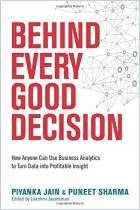

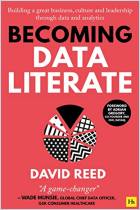
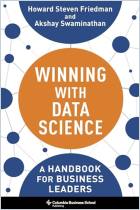
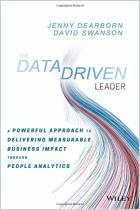
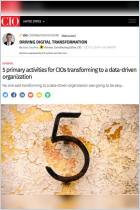





Comment on this summary
### Summary
### Introduction
The e-book begins via emphasizing the developing significance of facts in modern-day global. It introduces readers to the role of a information analyst, highlighting the skills and equipment vital for success in this area.
### Chapter 1: Understanding Data
This chapter provides a foundational know-how of facts types, assets, and systems. It covers:
- The difference among structured and unstructured records.
- Common information formats and resources.
- The importance of records first-class and integrity.
### Chapter 2: Data Collection and Preparation
Readers find out about the crucial steps concerned in collecting and preparing statistics for analysis, consisting of:
- Data collection strategies and gear.
- Data cleaning techniques to handle lacking or inconsistent records.
- Data transformation and normalization techniques.
### Chapter 3: Exploratory Data Analysis (EDA)
EDA is a critical step within the statistics analysis technique. This bankruptcy covers:
- Techniques for summarizing and visualizing facts.
- Identifying patterns, tendencies, and outliers.
- Using statistical measures to recognize data distributions.
### Chapter four: Statistical Analysis
This chapter delves into the statistical methods utilized by information analysts, which include:
- Descriptive and inferential statistics.
- Hypothesis checking out and self belief durations.
- Correlation and regression evaluation.
### Chapter five: Data Visualization
Effective records visualization is essential for communicating insights. This chapter explores:
- Principles of true information visualization.
- Tools and techniques for growing visualizations (e.G., charts, graphs, dashboards).
- Best practices for imparting facts to exclusive audiences.
### Chapter 6: Predictive Analytics and Machine Learning
An creation to predictive analytics and system learning, overlaying:
- Key principles and algorithms in machine gaining knowledge of.
- Steps worried in building predictive models.
- Evaluating and validating version overall performance.
### Chapter 7: Data-Driven Decision Making
The e-book emphasizes the importance of making knowledgeable selections based on statistics evaluation. This chapter includes:
- Techniques for interpreting analytical results.
- Case studies demonstrating facts-pushed decision-making in numerous industries.
- Ethical issues and facts privateness problems.
### Chapter eight: Tools of the Trade
An evaluate of popular gear and software program used by statistics analysts, together with:
- Programming languages like Python and R.
- Data visualization equipment like Tableau and Power BI.
- Statistical software like SPSS and SAS.
### Chapter 9: Developing Analytical Skills
This bankruptcy affords recommendations and techniques for developing and honing analytical abilties, such as:
- Critical questioning and problem-solving techniques.
- Continuous getting to know and expert improvement.
- Networking and staying updated with industry traits.
### Chapter 10: The Future of Data Analysis
The book concludes with a look at the future of statistics evaluation, discussing rising developments and technologies that will shape the sector, together with:
- Big Data and its implications.
- Artificial Intelligence and superior device gaining knowledge of strategies.
- The evolving position of facts analysts in a statistics-driven world.
### Conclusion
"Be Data Analytical" is a sensible and complete guide that covers the entire spectrum of statistics analysis, from foundational ideas to advanced techniques. Nithya Sashi's clean and engaging writing fashion makes complex topics available, supplying readers with the knowledge and self assurance to assume, examine, and innovate like a facts analyst. Whether you are a amateur or an experienced professional, this ebook gives treasured insights and realistic advice to help you be successful within the ever-evolving discipline of records analysis.
Key Insights and Takeaways
Morrow suggests that decision-making needs both human intuition and data analytics in order to be integrated properly. This core tenet permeates the entirety of the guide — reminding that where data gives itself to the core of understanding, human judgment is, and always will be, irreplaceable. Morrow argues that leaders should create a culture in which employees are encouraged to play with data rather than get bogged down with big data effort and results.